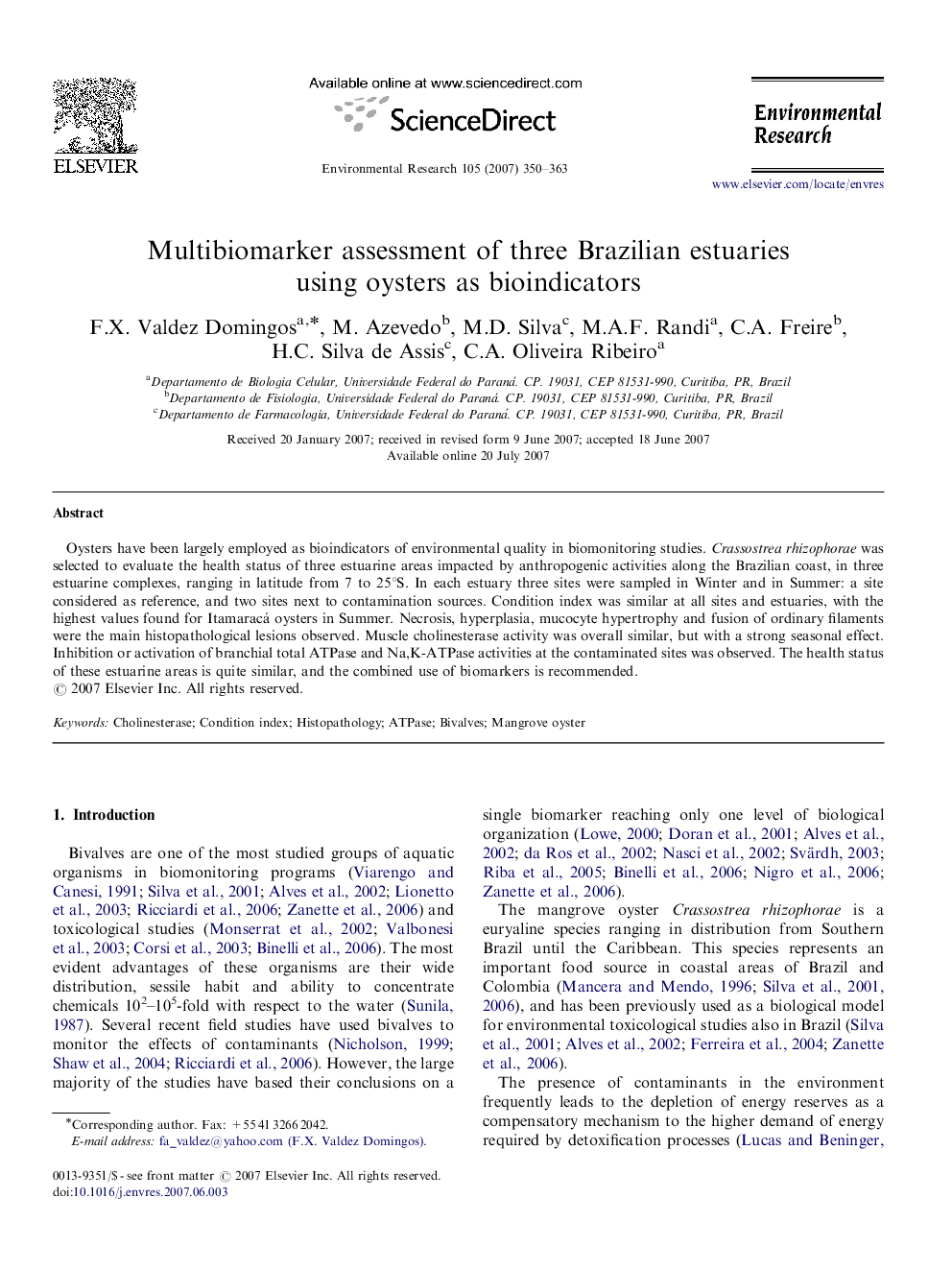| Article ID | Journal | Published Year | Pages | File Type |
|---|---|---|---|---|
| 4470332 | Environmental Research | 2007 | 14 Pages |
Oysters have been largely employed as bioindicators of environmental quality in biomonitoring studies. Crassostrea rhizophorae was selected to evaluate the health status of three estuarine areas impacted by anthropogenic activities along the Brazilian coast, in three estuarine complexes, ranging in latitude from 7 to 25°S. In each estuary three sites were sampled in Winter and in Summer: a site considered as reference, and two sites next to contamination sources. Condition index was similar at all sites and estuaries, with the highest values found for Itamaracá oysters in Summer. Necrosis, hyperplasia, mucocyte hypertrophy and fusion of ordinary filaments were the main histopathological lesions observed. Muscle cholinesterase activity was overall similar, but with a strong seasonal effect. Inhibition or activation of branchial total ATPase and Na,K-ATPase activities at the contaminated sites was observed. The health status of these estuarine areas is quite similar, and the combined use of biomarkers is recommended.
